The Ultimate Guide to Choosing Curtains for Your Home
The Ultimate Guide to Choosing Curtains for Your Home
Choosing the right curtains for your home might seem like a simple task, but it’s often overlooked as an important decision. Whether you're looking to block out light for privacy, add soft light to your space, filter natural sunlight, or enhance your home’s visual appeal, selecting the right curtains can truly transform your living experience.
Key Factors to Consider When Choosing Curtains
Curtains can completely change the look and feel of a room, so it's important to consider your needs and personal style. Here are the key factors to keep in mind:
1. Are your curtains primarily for blocking light or providing privacy?
Curtains are mainly used to control light or protect privacy. Different materials offer varying degrees of light filtration and privacy:
- Blackout Curtains: For rooms like bedrooms or home theaters where complete darkness is needed, thick recycled fiber curtains or linen curtains with ZeroLight TriCore™ Technology lining are ideal. These fabrics block out external light effectively, ensuring complete privacy.
- Sheer Curtains: If you want to let natural light in while maintaining privacy, linen and linen-blend fabrics are excellent choices. These materials maintain the openness of the space while offering a good level of privacy, perfect for living rooms or dining areas.
2. Different Curtain Lengths and Their Ideal Settings
The way curtains open and close impacts the overall ambiance and functionality of the room:
- Full-Length Curtains: If you prefer a complete window cover, full-length curtains are a classic and elegant choice. They’re perfect for living rooms, bedrooms, or any space requiring full coverage.
- Knee-Length or Sill-Length Curtains: If you want to keep your curtains partially open to let in more natural light, knee-length or sill-length curtains are ideal. These work well in casual spaces like kitchens or home offices.
- Stacked Curtains: Opt for stacked curtains if you want the flexibility to open them and expose more window view. This type is perfect for spaces where you need to control the light flexibly.
3. Curtains or Drapes?
The main difference between curtains and drapes is the fabric thickness and design:
- Drapes: If you’re aiming for a more formal and customized space, drapes (usually made of heavier fabrics) are a great choice. They completely cover the window and provide a high-end, dramatic look.
- Curtains: If you prefer lightweight curtains that are easy to open and close, they’re better suited for modern homes, especially spaces where you need to adjust them frequently.
4. Rod-Style Curtains or Track-Style Curtains?
The hanging method directly affects both the aesthetics and functionality of the curtains:
- Rod-Style Curtains: This traditional hanging method uses various rings or hooks and is suitable for households that need flexibility in styling. It’s versatile for all window types, particularly large windows or living rooms, offering a classic yet practical look.
- Track-Style Curtains: If you prefer a modern, minimalist design, track-style curtains are the perfect choice. They glide smoothly along a track, looking both sleek and efficient. Track-style curtains are particularly good for large windows or curved windows and can be upgraded to electric or smart curtains for added convenience.
5. Consider the Formality of Your Space
The curtain style should match the intended atmosphere and formality of the room:
- Casual Spaces: If your space has a laid-back or eclectic design, go for natural linen or linen-blend fabrics. These materials are light and breathable, exuding a natural vibe, and work well with simple solid colors or patterns, offering both comfort and style.
- Formal Spaces: For more formal living rooms or dining areas, opt for heavier, more sophisticated recycled fiber curtains or elegant linen blends. These materials help create a refined, luxurious atmosphere, perfect for formal settings.
How to Measure Curtains for a Perfect Fit

Width Measurement:
Measure the width of the window and frame. It’s recommended that your curtains be 8-10 inches wider than the window to create a fuller, more natural look.
Length Measurement:
Measure the distance from the bottom of the curtain rod to the floor. Keeping the curtain 1-2 cm off the floor gives a modern, clean look, while curtains that lightly touch the floor create an elegant effect. A slight floor-trailing effect adds a romantic, luxurious touch.
Consider Obstacles:
Make sure to take into account any nearby radiators, air conditioners, or windowsills to ensure you have enough space for the curtains to hang freely.
Hardware Space:
Ensure there’s enough room for installing curtain rods or tracks to guarantee both aesthetic appeal and functionality.
Click here to learn more about measuring curtains
Click here to use our measurement tool
Tips for Hanging Curtains

- Choose the Right Rod or Track: Ensure your rod or track can support the weight of the curtains for stable and secure hanging.
- Rod Placement: Install your curtain rod 8-10 inches above the window frame for an enhanced visual height.
- Add Weight to the Bottom: Attach small weights to the bottom of the curtains to prevent them from fluttering and to maintain a straight, polished look.
- Use ZeroLight TriCore™ Technology Lining: This lining improves the curtain’s thermal insulation, soundproofing, and blackout effects.
- Level the Installation: Ensure the curtain rod or track is installed level to prevent uneven hanging.
- Seasonal Storage: When switching out curtains for the season, store them in a breathable bag to prevent wrinkles and moth damage.
- Gentle Installation: Be careful during installation to avoid damage to both the fabric and hardware.
Curtain Cleaning and Maintenance Guide

You can opt for our pre-shipment cleaning service, which ensures that your curtains are cleaned before they leave the factory, so they arrive fresh, odor-free, and ready to hang. We use a gentle, eco-friendly cleaning process that not only protects the fabric but also ensures a crisp, wrinkle-free finish and helps prevent shrinkage or distortion.
Machine Wash:
Suitable for linen, linen-blend, and other fabrics. Use cold or lukewarm water with a mild detergent, and avoid fabric softeners.
Drying Tips:
We recommend air drying or using low heat in a dryer. When removing curtains from the dryer, keep them slightly damp to reduce wrinkles.
Regular Cleaning:
Use a microfiber duster, lint roller, or vacuum sponge to remove dust and keep your curtains looking fresh.
Dry Clean Fabrics:
For fabrics that require dry cleaning, take them to a professional dry cleaner.
Storage Tips:
Store curtains in a dry, ventilated area away from direct sunlight and moisture to avoid fabric damage.
Conclusion
Choosing the right curtains is an easy way to elevate the beauty and comfort of your home. With our sustainable, natural linen, linen-blend, and recycled fiber fabrics, combined with the flexibility of rod or track installations, you can create the perfect window treatment for your space. Visit our website for more inspiration and ideas on how to style your curtains!
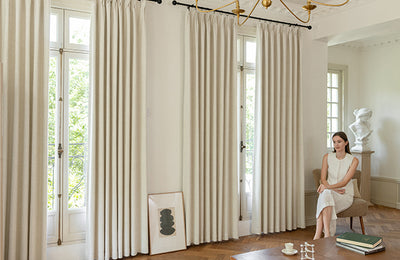
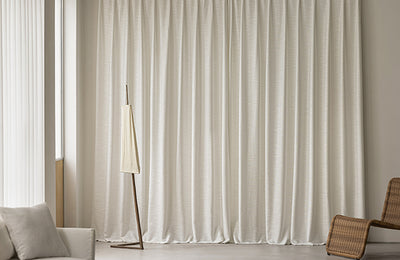
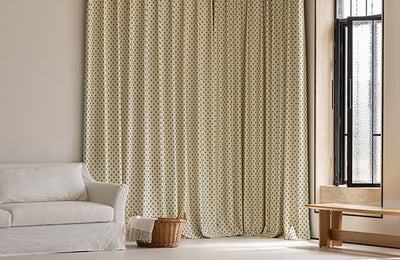
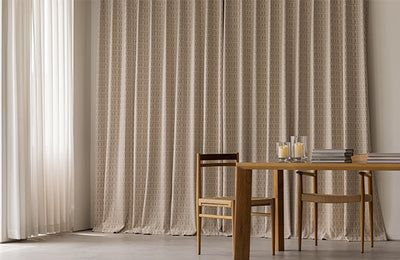
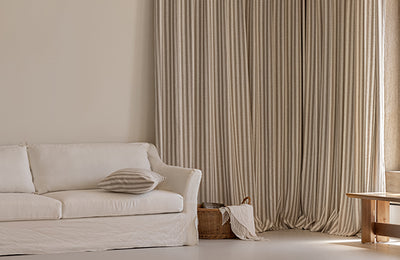
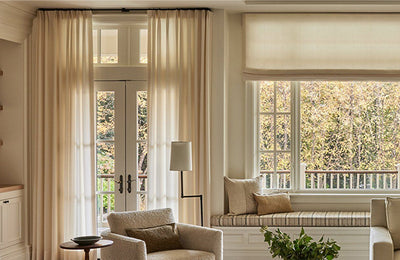
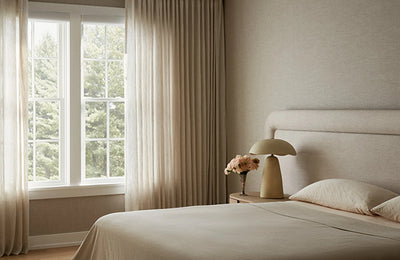
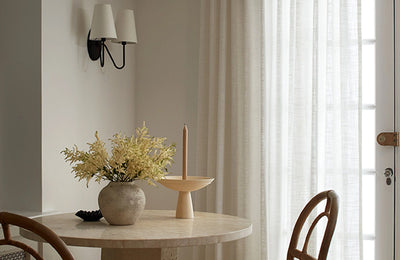
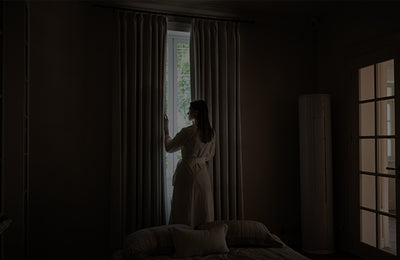


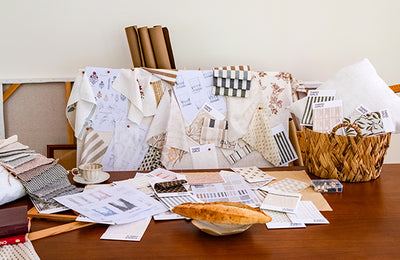

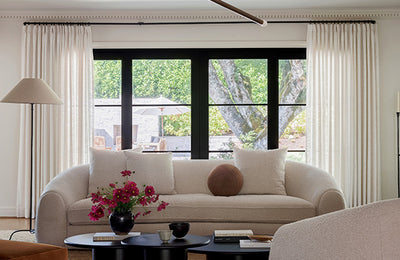
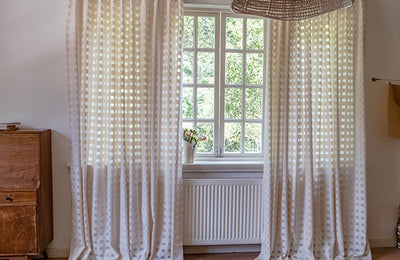
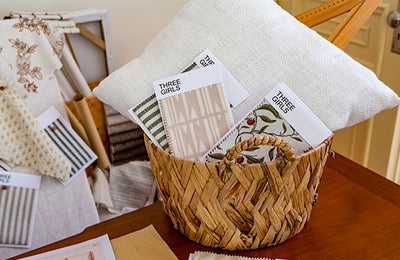
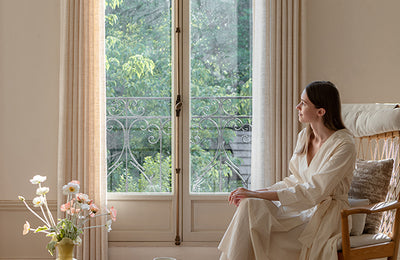
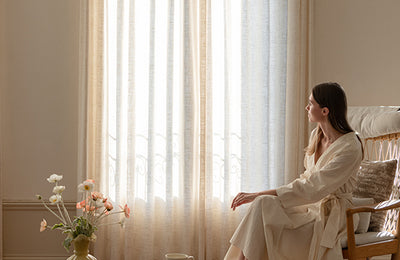


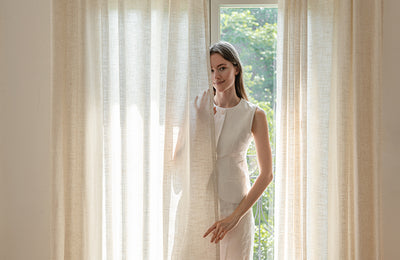


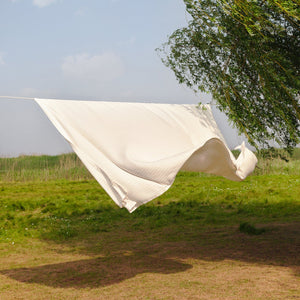
Leave a comment
All comments are moderated before being published.